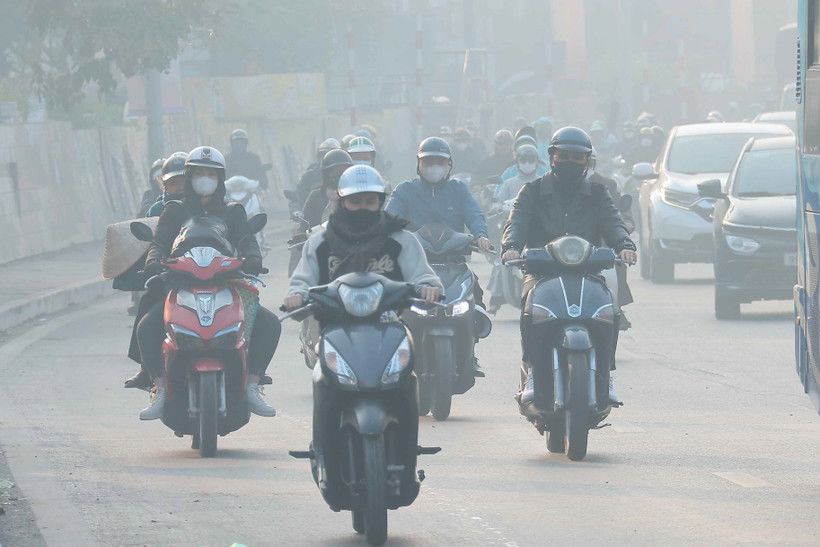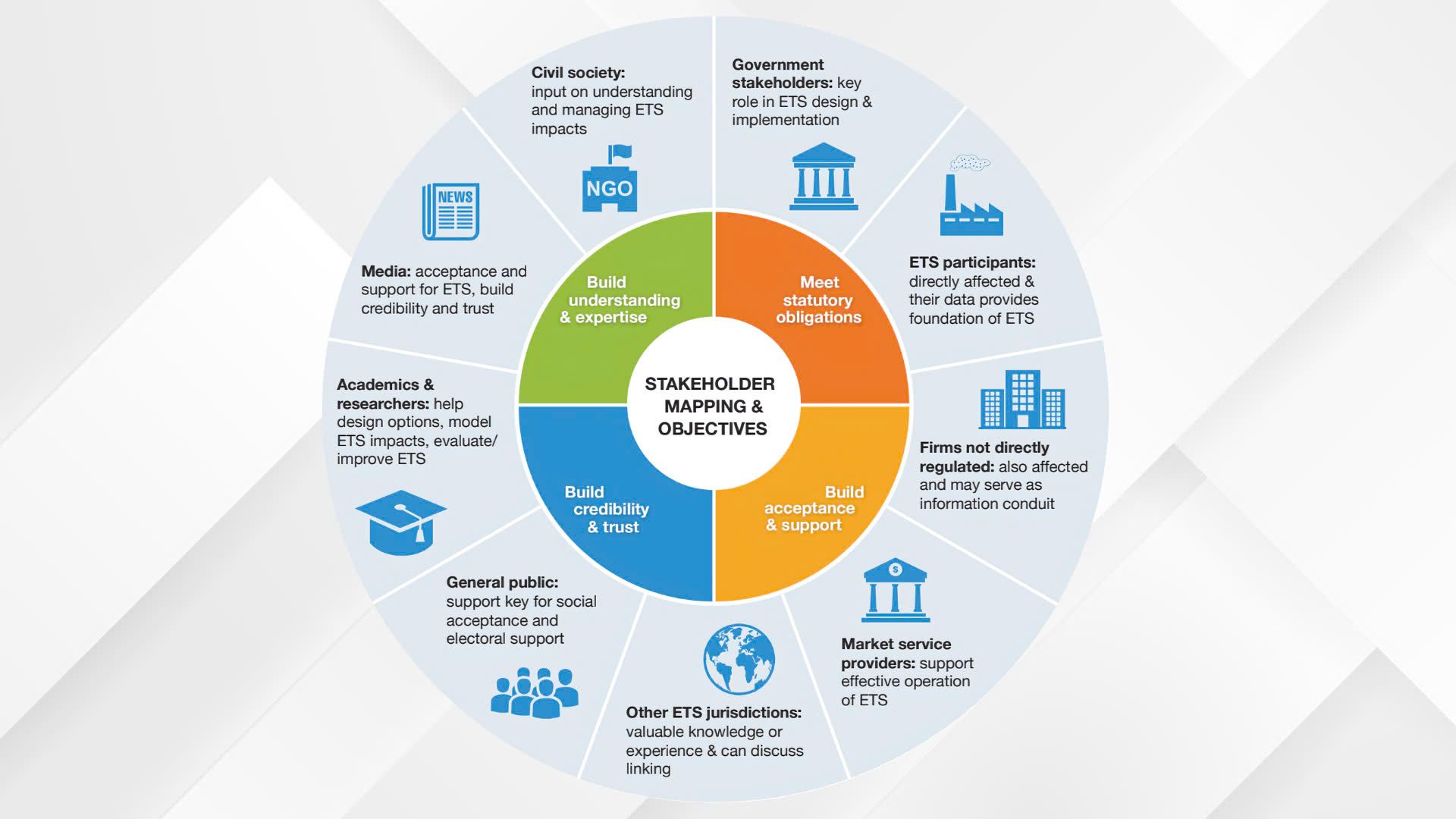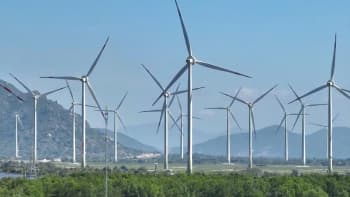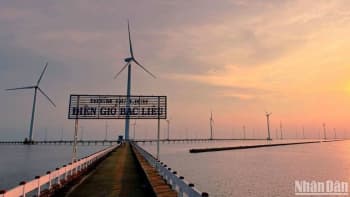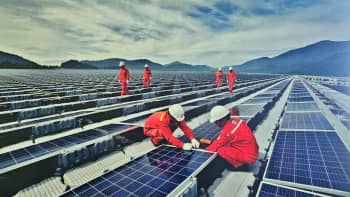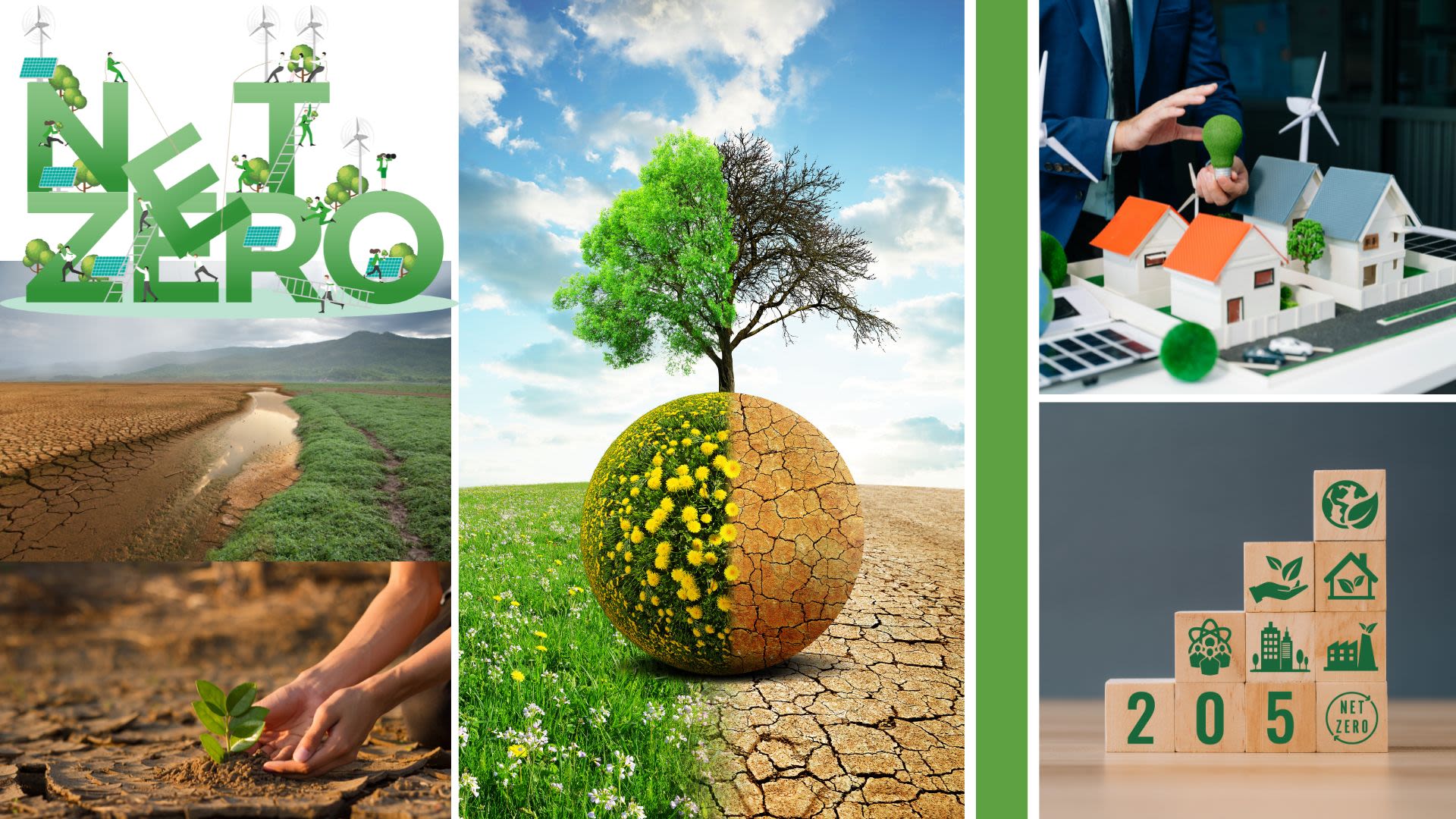
Viet Nam’s journey to address global climate change
From international responsibility to national action
As climate change becomes increasingly severe, nearly half of the world’s nations – accounting for approximately 80% of global emissions – have committed to achieving net zero emissions by the middle of this century. As one of the countries severely affected by climate change, Viet Nam is not standing on the sidelines.
During its integration process and in affirming its role in the global climate order, Viet Nam has gradually participated in international conventions and legal frameworks, putting forward strong commitments and implementing them through a series of concrete actions
Foundation of Viet Nam’s climate commitments
Viet Nam’s integration journey in responding to climate change has been marked by a series of pivotal international commitments, which together create a solid legal and political foundation for domestic climate policies.
In 1994, Viet Nam officially joined the Vienna Convention for the Protection of the Ozone Layer and the Montreal Protocol – a legal document developed within the framework of the Vienna Convention.
The Montreal Protocol is the first international binding mechanism that stipulates specific measures aimed at controlling and eliminating ozone-depleting substances, such as CFCs, Halons and HCFCs – a group of greenhouse gases with the potential to cause a greenhouse effect thousands of times more potent than CO2.
Through participation in the Montreal Protocol and its subsequent amendments, Viet Nam committed to phasing out these substances in line with global objectives, including an 80% reduction in HFC consumption by 2045.
Also in 1994, Viet Nam ratified the United Nations Framework Convention on Climate Change (UNFCCC). This is regarded as the foundation for the entire global climate negotiation process. The Convention establishes the principle of “common but differentiated responsibilities”, a viewpoint that Viet Nam has consistently maintained in international negotiations.
Accordingly, the UNFCCC requires developed countries to take the lead in emissions reduction and provide financial and technological support to developing countries through mechanisms such as the Global Environment Facility (GEF) and later the Clean Development Mechanism (CDM) under the Kyoto Protocol.
Air pollution is one of the global issues. (Photo: VNA)
Air pollution is one of the global issues. (Photo: VNA)
In 2002, Viet Nam continued to demonstrate its proactive role by ratifying the Kyoto Protocol - the first legally binding treaty regarding greenhouse gas emission reductions. Although having no reduction obligations as a developing country, Viet Nam still participated in flexible mechanisms such as the CDM, thereby attracting investment and technology transfer from developed countries.
In 2016, Viet Nam officially ratified the Paris Agreement — a global climate treaty requiring all countries, regardless of their level of development, to contribute to the goal of limiting global temperature rise to below 2°C, and to strive for 1.5°C. For the first time, Viet Nam developed and submitted its Nationally Determined Contribution (NDC), setting specific targets for emission reduction and adaptation.
Deputy Prime Minister Tran Hong Ha has emphasised that the path to achieving the targets set out under the Paris Agreement on climate change is arduous, demanding intellect, cooperation, and a high sense of solidarity. He affirmed that countries must design a highly methodical and realistic roadmap for emission reduction, not pursuing it at all costs as economic and social factors must also be taken into consideration.
At the 2021 United Nations Climate Change Conference (COP26), Prime Minister Pham Minh Chinh made a historic pledge: Viet Nam will achieve net-zero emissions by 2050. The prime minister stressed: “Although we are a developing country that has only begun industrialisation in the past three decades, Viet Nam will develop and implement strong emission reduction measures with its own resources, along with cooperation and support from the international community, especially developed countries.”
“Viet Nam will achieve net-zero emissions by 2050.”
“Responding to climate change and restoring nature must become the highest priority in every development policy, the highest ethical standard for every level, every sector, every enterprise, and every citizen,” the prime minister affirmed.
Alongside its net-zero commitment, Viet Nam has also joined numerous global climate initiatives, such as the Glasgow Declaration on Forests and Land Use, a pledge to reduce global methane emissions by 30% by 2030, and the Global Adaptation Action Alliance.
In 2022, at COP27, Viet Nam and the International Partners Group (IPG) announced a political declaration establishing the Just Energy Transition Partnership (JETP), with a total committed financial support package of up to 15.5 billion USD. This is the first comprehensive cooperation framework between Viet Nam and developed countries, aiming to transition from coal power to clean energy in a just manner.
Viet Nam’s climate commitment process has not stopped at “participation” but has increasingly demonstrated a spirit of proactivity, cooperation, and solidarity with the international community in action, from negotiation and implementation to domestic policy innovation.
From international commitments to domestic legislation
After gradually affirming its position through contributing to international climate agreements, Viet Nam has made a strong shift from commitment to action, concretising this through its domestic policy and legal framework.
One of the earliest milestones was Decision No. 158/2008/QD-TTg, approving the National Target Programme on Climate Change Response. This was Viet Nam’s first comprehensive climate programme, laying the foundation for green growth policies, with the aim of establishing a long-term action framework to ensure sustainable development, ecological security, and people’s livelihoods.
Soon after the ratification of the Paris Agreement in 2016, Viet Nam swiftly incorporated its climate commitments into the national legal framework. The most significant step was the 2020 Environmental Protection Law, which, for the first time, included the concepts of “greenhouse gas emissions,” “greenhouse gas inventory,” “NDC” (Nationally Determined Contributions), and “carbon neutrality.” This law also established an MRV system (Measurement, Reporting, and Verification) in accordance with international standards, creating the legal foundation for emissions management and climate adaptation.
Volunteers from the Bien Hoa Green Group join a clean-up event at Cau Sac Canal, Buu Hoa Ward, Bien Hoa City, Dong Nai Province. (Photo: VNA)
Volunteers from the Bien Hoa Green Group join a clean-up event at Cau Sac Canal, Buu Hoa Ward, Bien Hoa City, Dong Nai Province. (Photo: VNA)
A series of legal documents have been issued to detail and implement the provisions of the 2020 Environmental Protection Law:
Decree No. 06/2022/ND-CP: Prescribes the roadmap for emissions reduction by 2030, assigns responsibilities to ministries and sectors, and establishes a coordination mechanism for implementing the NDC.
Circular No. 01/2022/TT-BTNMT and Circular No. 17/2022/TT-BTNMT: Provide guidance on climate impact assessment, the preparation of national climate reports, and sectoral emissions inventories.
Decision No. 888/QD-TTg (2022): Approves the National Climate Change Strategy until 2050, emphasising the goal of Net Zero as a “political order” and a driver for sustainable development.
Decision No. 896/QD-TTg (2022): Approves the National Action Programme on Climate Change Response through to 2050. This document sets out overall and specific targets, including the development of sea level rise scenarios, integration of climate considerations into development planning, and mobilization of diverse domestic and international resources. Funding for the period 2009–2015 was estimated at nearly 2,000 billion VND.
Decree No. 119/2025/ND-CP: Updates and clarifies regulations related to greenhouse gas emission reduction, carbon market development, and ozone layer protection, in line with Viet Nam’s updated international commitments.

Alongside the establishment of this legal foundation, Viet Nam has delineated emissions reduction responsibilities across six key sectors: energy, transport, industry, agriculture, waste management, and land use and forestry resources. Detailed action plans have been developed for each ministry and sector, with concrete emission reduction targets for each phase.
Viet Nam has also set up the Joint Secretariat of the Just Energy Transition Partnership (JETP) and developed an official information portal at jetp.moit.gov.vn to update progress and ensure transparency. Following the issuance of a political declaration with the International Partners Group (IPG), the JETP marks Viet Nam’s largest climate finance commitment to date, with total financial support amounting to 15.5 billion USD.
In parallel with efforts to mobilise climate finance, Viet Nam has commenced the implementation of an emissions trading scheme (ETS) in a pilot phase, initially applying to three major emitting sectors: steel, cement, and thermal power. Emission allowances for the period 2025–2026 are expected to be issued by the end of 2025.
Stakeholders in building the ETS carbon credit market. (Source: World Bank Group)
Stakeholders in building the ETS carbon credit market. (Source: World Bank Group)
Enterprises will be granted CO₂ emission quotas; if they exceed the limit, they must purchase carbon credits, while, conversely, they can sell any surplus on the market. The ETS not only creates economic pressure to promote technological transformation (waste heat recovery, digitalisation, fuel switching, etc.) but also opens opportunities to develop a domestic carbon credit market and work towards international connectivity.
On this basis, Viet Nam is also preparing for the next step: connecting the domestic carbon market with the international market, in accordance with Article 6 of the Paris Agreement. This mechanism allows for the Internationally Transferred Mitigation Outcomes (ITMOs), helping countries jointly achieve their Nationally Determined Contributions (NDCs) targets more effectively and at lower cost.
Accordingly, Viet Nam has a major opportunity to promote the connection of its carbon market with those in the region and globally. The carbon market allows countries and enterprises to trade carbon credits, while promoting emission reduction projects and encouraging investment in green technologies.
Net Zero journey: positive signals and challenges ahead
Viet Nam is gradually moving from policy planning to practical implementation in many fields, especially the energy industry — one of the sectors with largest sources of emissions.
On the basis of strategic orientations such as the Politburo’s Resolution No. 55-NQ/TW on national energy development and energy master plans, Power Development Plan VIII, as adjusted in 2025, has been built with a focus on gradually reducing coal-fired power and prioritising renewable energy such as wind, solar, biomass, and tidal energy. This is seen as a lever to shift the national energy system away from dependence on fossil fuels.
In fact, Viet Nam has effectively taken its natural advantages to develop renewable energy. By 2022, the proportion of solar power accounted for 21% and wind power 5% of the national electricity structure, a remarkable increase from almost zero in 2018.
Within just one year, from 2018 to 2019, according to the Viet Nam Energy Association, more than 330 solar power projects were submitted for approval, and by the end of August 2021, 24 wind power plants with a total capacity of nearly 1,000 MW had been put into operation.
Under the adjusted Power Development Plan VIII, Viet Nam aims to reach 6,000 MW of offshore wind power by 2030 and 17,500 MW by 2035 — an ambitious but entirely feasible target with adequate support.
The land use and forestry sector has also recorded important progress. The Government has approved a programme to plant 20,000ha of new mangrove forests for the 2021-2025 period, while piloting forest carbon credit exchange projects in several localities, in accordance with Decision No. 1662/QD-TTg approving the project on “Protecting and developing coastal forests to respond to climate change and promote green growth for the 2021-2030 period.” This is a positive move to increase greenhouse gas absorption capacity and strengthen the resilience ability of coastal ecosystems against climate change.
At the same time, localities across the country have actively implemented the contents of the Nationally Determined Contribution (NDC), especially following the 2022 update, which set the target of reducing greenhouse gas emissions by as much as 43.5% by 2030 with international support, a significant increase from the 27% target set in the 2020 NDC. Awareness-raising communication activities, greenhouse gas inventories, and the integration of climate content into local development planning are also being widely carried out, laying the foundation for a profound transformation across society.
The finance–banking sector has also begun to play an active role in supporting the green transition process. At the end of 2024, the Bank for Investment and Development of Viet Nam (BIDV) and the French Development Agency in Viet Nam (AFD Viet Nam) signed a 50 million EUR (equivalent to more than 58 million USD) climate credit line to finance emission reduction and green growth projects. This follows the success of SUNREF — a 100 million USD green credit line implemented in 2021.
The 50 million EUR climate credit line will continue to provide BIDV with long-term funding to finance the green growth sector for sustainable development goals, aiming to become a Net Zero Bank by 2045.
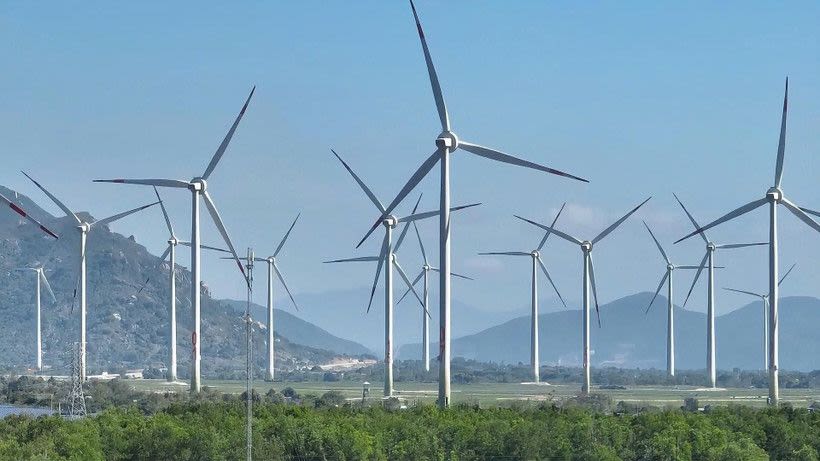
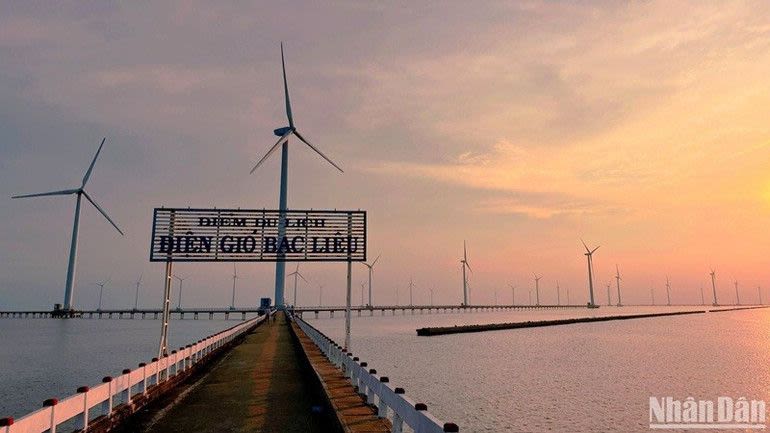

However, Viet Nam’s journey towards Net Zero still faces many challenges.
First is the financial challenge. According to the World Bank’s Country Climate and Development Report (2022), Viet Nam needs to invest about 368 billion USD by 2040 to ensure a just transition, climate resilience, and achievement of the Net Zero target. This figure far exceeds the current capacity of public finance mobilisation, requiring the involvement of the private sector and international cooperation through mechanisms such as JETP, the carbon market, and green climate credits.
Electricity transmission infrastructure remains insufficiently synchronised, and domestic technological capacity is still limited, especially in areas such as energy storage, emissions monitoring, early disaster warning, and digital transformation in environmental management.
The legal framework related to climate change, although established, still needs improvement, particularly regarding mechanisms to encourage small and medium-sized enterprises to access green credit and low-carbon technology.
Public awareness of climate change and shared responsibility for action remains uneven. Communication and environmental education need to be further strengthened, particularly at the grassroots level, such that every citizen understands that Net Zero is not only a government commitment but also a national goal requiring the participation of the whole society.
Viet Nam’s Net Zero journey has begun with solid steps and will succeed if continued with determination, unity, and concrete action.
Published: August 2025
Project coordination: Nam Dong
Content: Hai Yen
Layout: NDO
References: Department of Climate Change (Ministry of Agriculture and Environment), Legal Library, Online Magazine Environment and Life, VGP, United Nations Climate Change, Ministry of Industry and Trade.
Photos: Nhan Dan Newspaper, Vietnam News Agency
